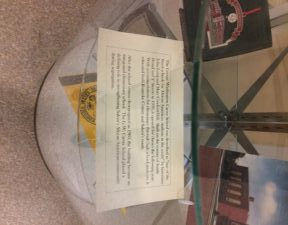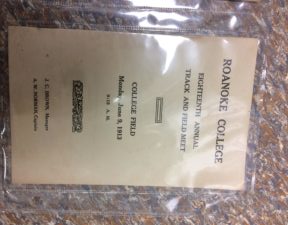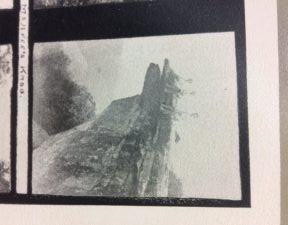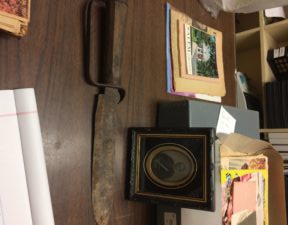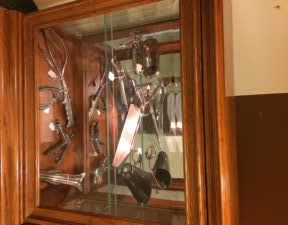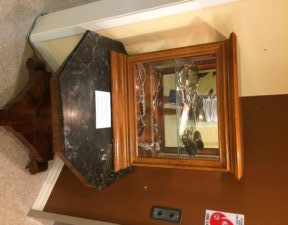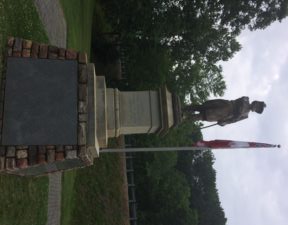In the last of my visits to the Salem Museum, I finally finished my small exhibit. As I explained in my previous post, I had already done much of the research for the signage of the exhibit and had thoroughly dug through the museum’s archives to find any objects that were relevant. All that had remained was to type up the information I had collected and position the objects I had found to shape my exhibit. These two tasks were not as easy as they sound!
With an exhibit as small as mine, there is a delicate balance between the different mediums that information can be presented. There is less freedom of choice when your only space is a small table and two walls to hang things on, as opposed to filling an entire room. Surprisingly, I had gathered quite a lot of information that I felt was both important and interesting enough to be included in my exhibit. I knew beforehand that I wanted one longer sign that gave a majority of the context and narrative of Lake Spring Hotel/Park, with some small ones spread throughout with other tidbits. When I began typing up the main sign, it became clear that I had too much stuff to say. I was over a page before I had gotten halfway through the story of the Hotel. Something that was impressed upon me throughout my tenure as an intern was that even if we have a sharp and distinctly historical interest in the subject, the museum ultimately has to cater to the visitors. Most of the museum’s patrons would not be interested enough to stand there and read more than a page of information, especially for such a tiny exhibit. So, I had to cut my main sign down quite a lot; even more so when Fran, the director, did some edits! However, I was very satisfied with the outcome.
With m signs squared away, I then had to arrange the objects I had selected. At first I was concerned, for most of what I had were either pictures or items that needed to be hung- I had very few actual “items.” The presentation of the visual information is just as important as the written information. To be a successful exhibit, the narrative cannot be derived fully from one and not the other. My signs would convey the story of the property, and my pictures would definitely provide visual context- it would be easy for any Salemite to see the stark differences from the contemporary landscape to the modern. As for my items, I merely had some wooden souvenirs and two old spoons from the Hotel. How was I to incorporate those in any meaningful way? The answer hit me when I walked past the welcome desk and saw a magnifying glass sticking out of a office supply storage cup. An exhibit that is visually and intellectually engaging is one thing, but one that is those things plus interactive is much more. I arranged my small items and left the magnifying glass there with them and I wrote up a sign telling the onlooker to use the glass to view the intricate details of the man-made objects. Both of my supervisors loved it!
The process of putting together my exhibit was not as exactly cut-and-dry as I have laid it out above. Working with the objects gave me ideas for the signs, and vice versa, so at times I would be going back and forth from the table to my laptop. All in all, though, I feel like everything came together really well! I employed many of the skills of researching and visual display that Alex taught me, like creating a dynamic of varying heights, for example. I’m proud of the way my exhibit turned out, and of all that I learned about Salem and the museum process in general. I am genuinely sad to be finishing this experience, but I am also sure that I’ll be back to the Salem Museum.
Finally, here are some pictures of my exhibit:
Here is what my exhibit looks like as a whole.
Close up of the table portion.
The left wall, which features two invitations to balls that were hosted at the Hotel, dating back to the late 1800s.
This is one of the most interesting pieces. Its a poster (somewhat in pieces) advertising the Hotel that has been sealed over top of a beautiful piece of wood.
This is my main sign, you can read it if you wish!
The interactive portion of the exhibit.
And finally, my supervisor, Alex, and I on my last day.








